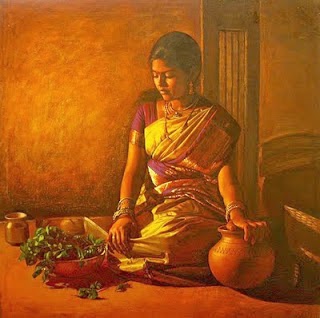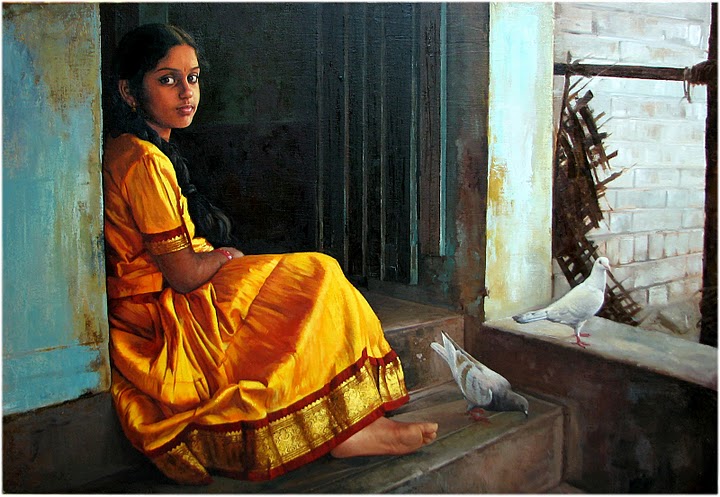

It now hangs at the National Gallery of Modern Art, New Delhi, on loan from the artist.Īs Husain became a living icon of Hindu-Muslim, gangajamni culture, his art acquired a quintessentially Indian form and content while being global in its relevance and appeal. When this painting was shown, despite the ripples it created, no one came forth to buy it for Rs 800. Some critics have suggested the women were the pancha kanyas (Ahalya, Kunti, Draupadi, Tara, Mandodari) of Hindu mythology. From the hand of one woman, painted as if frozen in a mudra, hangs a large spider by its thread. This painting, considered by cognoscenti to be his best of all time, features five women reminiscent of ancient Indian sculpture with an oil lamp hanging from the top of canvas and some unintelligible words in a script that looks like ancient Brahmi, Magadhi or some long forgotten dialect. The next year he painted the more enigmatic 'Between the Spider and the Lamp'. "Alienation as a concept is alien to my nature," he would joke. Nor did he, at any time, understand the angst of existentialism. "I realised one did not have to paint like Europeans to be modern," he maintained. 'Zameen' was inspired by Bimal Roy's Do Bigha Zameen (1955) but instead of bemoaning rural poverty and indebtedness, it presents a symbolic celebration of life in rural India with a vibrancy that had never been seen before. In the mid-1950s Husain got national recognition with two very seminal canvases 'Zameen' and 'Between the Spider and the Lamp'. While his contemporaries were busily assimilating European art from Byzantium downwards, Husain sought inspiration in temple sculptures (Mathura and Khajuraho), Pahari miniature paintings and Indian folk art. What differentiates Husain from his Progressive contemporaries is his deeply rooted 'Indianness' and his celebration of Indian life and people. As Husain told me with a chuckle, "I was a best seller right from start." With prices ranging from Rs 50 to Rs 300, the exhibition sold out. Husain's work was noticed right from that first showing and with the encouragement of Rudi von Leyden, the German Jewish art critic, he held his first one-man show in Mumbai in 1950. Francis Newton Souza (1924-2002), the prodigious enfant terrible of Indian art, spotted Husain's talent by chance and immediately included him in his Progressive Artists Group (PAG) in 1947. Husain's life started to change radically around the time of Independence. In 2004 he made the semi-autobiographical Meenaxi: A Tale of Three Cities with Tabu in the lead role which ran into trouble with Muslim Ulema. Of these Through the Eyes of a Painter (1967) won the Golden Bear at the Berlin Film Festival but the most well known is Gaja Gamini (2000) that featured Madhuri Dixit as his muse. Shantaram's Prabhat Studios and later for New Theatres.Ĭinema held a life-long fascination for Husain and decades later, he went on to make several much-talked about films.

Soon, he moved to painting cinema hoardings, first for V. In 2008 in London, I saw a portrait Husain had done of Lord Ghulam Noon's elder brother in a Bhendi Bazaar sweet shop.

There were not too many commissions but some of these early portraits still survive. He first started out by walking the streets of Bombay offering to paint portraits of people who could afford to pay him Rs 25. He arrived in what was then Bombay in the early 1930s, penniless but bursting with enthusiasm and energy, traits that he retained all through his life. He was an immensely talented and intelligent man with an enormous curiosity about the world who learnt effortlessly from life and people.

Husain was educated in the streets of Indore, a madrassa in Baroda, the Indore School of Arts and very briefly the J.J. Four years later, he accepted Qatari nationality, spending his time between Dubai, London and Qatar. The tantalising and tragic relationship-between a nation's notion of the self and Husain's visualisation of it in his art practice-became the vexed terrain over which competing political alignments fought their proxy wars for a good two decades before it eventually led to Husain's self-imposed exile from India in 2006. It is also further complicated by the illicit intimacy between history and the 'perception of history' in post-colonial imaginations. As sociologist Veena Das remarks, this "impossible love" had an inherent fragility because the idol, the image and the word are all strongly contested entities.


 0 kommentar(er)
0 kommentar(er)
